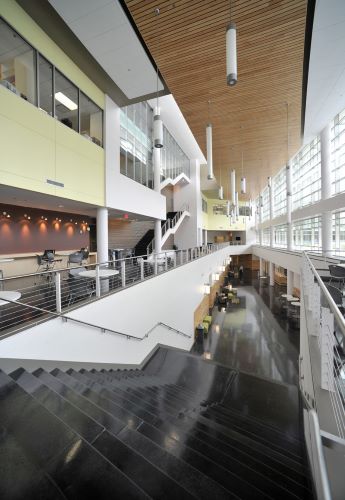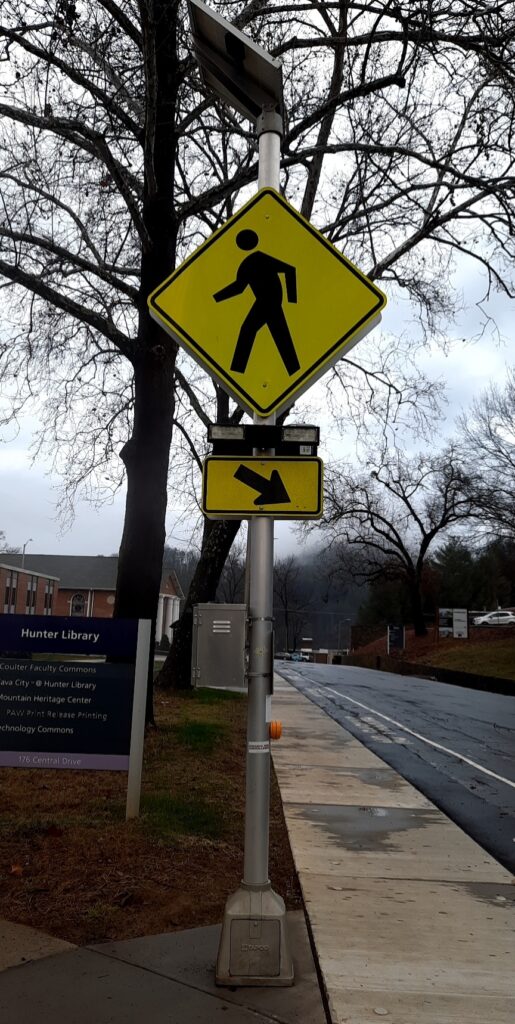WCU’s campus is not fully accessible for people with physical disabilities. Owen Perkins, a freshman at WCU, has a visual impairment.
“It’s not the most walkable campus,” said Perkins.
See the video below on how hard it is for Perkins to navigate campus.
Video edited by Ruby Annas.
Many organizations at WCU are providing resources and accommodations for students with disabilities, but more can be done to make WCU’s campus more accessible.

Perkins’ eyes are sensitive to light and have low depth perception. Depending on the time of day, it is hard to see the contrast, particularly with stairs on campus like the ones shown in the video and in the Health and Human Science building. For better accessibility, all stairs should have a contrasting color on the edge and/or back wall of the step.
The campus also has many hills which for Perkins and his friend who has POTS syndrome can be challenging. The sidewalks are uneven and cause Perkins to trip.
More accessibility issues on campus were pointed out during SGA’s safety and accessibility walk in October.
SGA passed a resolution on Dec. 5 asking WCU to review safety and accessibility concerns on campus. SGA president, Estefany Gordillo-Rivas, will have more conversations on the issue in the spring.
“There is potential for more resolutions to be written regarding accessibility. Accessibility is not just physical access to buildings/campus locations but also for accessibility for resources that would help students with learning disabilities and resources that a students may need to utilize in general,” said Gordillo-Rivas.

WCU’s student population includes many with disabilities. The office of accessibility resources (OAR) currently provides accessibility services and academic accommodations to 628 registered students. The director of OAR, Wesley Satterwhite clarifies that this number does not include all students with disabilities on campus because registration with the office is not required.
OAR is fully staffed with three full-time employees. Current initiatives are to improve the OAR website to make it less confusing and more accessible. Satterwhite is also working on improving the process of making housing accommodations go directly to OAR instead of residential living.
Perkins is registered for accommodations like preferential seating, ability to leave the classroom to rest their eyes, bigger text font, being able to test separately and tests read to him.
Perkins registered with OAR during the summer and has had several meetings with them. Perkins says that OAR has been very helpful with transferring all their accommodations. Some WCU professors also work with him and provide accommodation, but not all.

“Some professors like my biology and geography teachers are really on top of it, making sure I have the right font size, and everything is easy to see,” said Perkins. “But some professors are harder to work with.”
Perkins describes how professors not providing accommodations makes completing classwork difficult.
“Sometimes it’s difficult to do classwork. Recently, I had a professor hand out a paper test, and I couldn’t see it, so I had to take it another day,” said Perkins.
Outside academics, groups on campus like Disabled Students United (DSU) want to make WCU a comfortable place for people with disabilities. In November, DSU’s president, Rei Feeley, lead a panel discussion with OAR about language use when it comes to the disabled community.
More events in the future could also help with continued education and awareness for the community. The passing of the safety and accessibility resolution is a step forward in making campus accessible for all.


